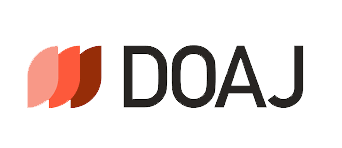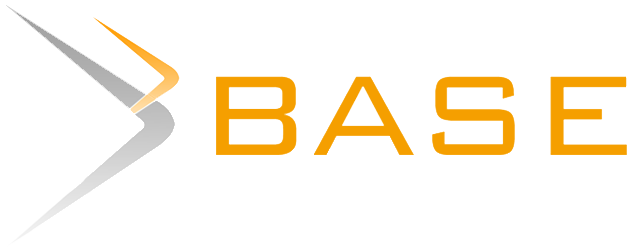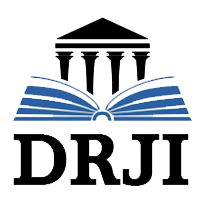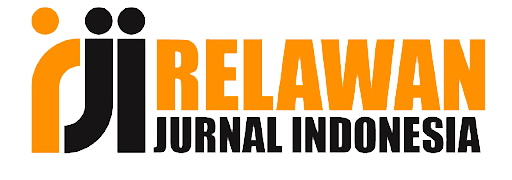Rasa Iri di Tempat Kerja dan Perilaku Proaktif: Peran Kepemimpinan yang Memberdayakan sebagai Moderator
Abstract
This study aims to explore the influence of envy on employee proactive behavior, as well as examine the moderating role of empowering leadership in the relationship. Envy is a common emotion in the workplace that can have both positive and negative impacts on employee behavior. Envy can be divided into benign envy (constructive envy) and malicious envy (destructive envy) which have different impacts on proactive behavior, namely employees' initiative actions in creating new job opportunities. The study used a quantitative approach with an explanatory research design, involving 205 respondents from the hospitality sector, and analyzed using Moderated Regression Analysis (MRA). The results show that benign envy has a significant positive effect on proactive behavior, while malicious envy shows no significant effect. Empowering leadership was shown to strengthen the positive relationship between benign envy and proactive behavior, and decrease the negative impact of malicious envy. Overall, envy and empowering leadership accounted for 71.8% of the variance in proactive behavior. This study recommends the importance of implementing an empowering leadership style to create a work environment that encourages positive motivation and employee initiative. Scientifically, these findings contribute to the organizational psychology literature by confirming the differential role of envy and leadership style in shaping proactive behavior.
Penelitian ini bertujuan untuk mengeksplorasi pengaruh envy terhadap perilaku proaktif karyawan, serta menguji peran moderasi dari kepemimpinan yang memberdayakan dalam hubungan tersebut. Rasa iri merupakan emosi umum di tempat kerja yang dapat berdampak positif maupun negatif terhadap perilaku karyawan. Envy dibedakan menjadi benign envy (iri konstruktif) dan malicious envy (iri destruktif) yang memiliki dampak berbeda terhadap perilaku proaktif, yaitu tindakan inisiatif karyawan dalam menciptakan peluang kerja baru. Penelitian menggunakan pendekatan kuantitatif dengan desain explanatory research, melibatkan 205 responden dari sektor perhotelan, dan dianalisis menggunakan Moderated Regression Analysis (MRA). Hasil menunjukkan bahwa benign envy berpengaruh signifikan positif terhadap perilaku proaktif, sedangkan malicious envy tidak menunjukkan pengaruh signifikan. Kepemimpinan yang memberdayakan terbukti memperkuat hubungan positif antara benign envy dan perilaku proaktif, serta menurunkan dampak negatif dari malicious envy. Secara keseluruhan, rasa iri dan kepemimpinan yang memberdayakan menyumbang 71,8% variansi perilaku proaktif. Penelitian ini merekomendasikan pentingnya penerapan gaya kepemimpinan pemberdayaan untuk menciptakan lingkungan kerja yang mendorong motivasi positif dan inisiatif karyawan. Secara ilmiah, temuan ini memberikan kontribusi terhadap literatur psikologi organisasi dengan menegaskan peran diferensial rasa iri dan gaya kepemimpinan dalam membentuk perilaku kerja yang proaktif.
Keywords
Full Text:
PDFReferences
Amundsen, S., & Martinsen, Ø. L. (2014). Empowering leadership: Construct clarification, conceptualization, and validation of a new scale. Leadership Quarterly, 25(3), 487–511. https://doi.org/10.1016/j.leaqua.2013.11.009
Arnold, J. A., Arad, S., Rhoades, J. A., & Drasgow, F. (2000). The empowering leadership questionnaire: The construction and validation of a new scale for measuring leader behaviors. Journal of Organizational Behavior, 21(3), 249–269.
Bindl, U. K., & Parker, S. K. (2010). Proactive work behavior: Forward-thinking and change-oriented action in organizations. APA Handbook of Industrial and Organizational Psychology, Vol 2: Selecting and Developing Members for the Organization., July 2010, 567–598. https://doi.org/10.1037/12170-019
Crant, J. M. (2000). Proactive behavior in organizations. Journal of Management, 26(3), 435–462. https://doi.org/10.1177/014920630002600304
Crusius, J., Gonzalez, M. F., Lange, J., & Cohen-Charash, Y. (2020). Envy: An adversarial review and comparison of two competing views. Emotion Review, 12(1), 3–21. https://doi.org/10.1177/1754073919873131
Dea Farahdiba, & Faisol Rizal. (2023). Peran gaya kepemimpinan dalam mendorong karyawan proaktif dalam kepuasan karir. Jurnal Manajemen Bisnis Dan Terapan, 1(1), 75–87. https://doi.org/10.20961/meister.v1i1.436
Devi, D. (2023). Pengaruh gaya kepemimpinan terhadap perilaku proaktif dengan pemberdayaan psikologis sebagai variabel mediasi. 2(2), 148–159.
Fatima, A. do C., Muklhlis, I., & Zagladi, A. N. (2023). Perilaku kerja proaktif dalam pengembangan UMKM. Jurnal Ilmiah Universitas Batanghari Jambi, 23(3), 3544. https://doi.org/10.33087/jiubj.v23i3.4606
Grant, A. M., & Ashford, S. J. (2008). The dynamics of proactivity at work. Research in Organizational Behavior, 28, 3–34. https://doi.org/10.1016/j.riob.2008.04.002
Junker, T. L., Bakker, A. B., Gorgievski, M. J., & Derks, D. (2022). Agile work practices and employee proactivity: A multilevel study. Human Relations, 75(12), 2189–2217. https://doi.org/10.1177/00187267211030101
Lange, J., & Crusius, J. (2015). The benign and malicious envy scale (BeMaS). Personality & Social Psychology Bulletin, 41(2), 284–294.
Lange, J., Crusius, J., & Hagemeyer, B. (2016). The evil queen’s dilemma: Linking narcissistic admiration and rivalry to benign and malicious envy. European Journal of Personality, 30(2), 168–188. https://doi.org/10.1002/per.2047
Liu, W., Lepak, D. P., Takeuchi, R., & Sims, H. P. (2003). Matching leadership styles with employment modes: Strategic human resource management perspective. Human Resource Management Review, 13(1), 127–152. https://doi.org/10.1016/S1053-4822(02)00102-X
Lukoto, K., & Chan, K. Y. (2017). The perception of innovative organisational culture and its influence on employee innovative work behaviour. PICMET 2016 - Portland International Conference on Management of Engineering and Technology: Technology Management For Social Innovation, Proceedings, September 2016, 972–977. https://doi.org/10.1109/PICMET.2016.7806707
Marrone, P. (2013). Chambers, RT. Etica e Politica, 15(1), 583–605. https://doi.org/10.1093/acprof
Navarro-Carrillo, G., Beltrán-Morillas, A. M., Valor-Segura, I., & Expósito, F. (2018). The pernicious effects of malicious versus benign envy: perceived injustice, emotional hostility and counterproductive behaviors in the workplace. Spanish Journal of Psychology, 21(March 2021). https://doi.org/10.1017/sjp.2018.49
Parker, S. K., Bindl, U. K., & Strauss, K. (2010). Making things happen: A model of proactive motivation. Journal of Management, 36(4), 827–856. https://doi.org/10.1177/0149206310363732
Parker, S. K., Wang, Y., & Liao, J. (2019). When is proactivity wise? A review of factors that influence the individual outcomes of proactive behavior. Annual Review of Organizational Psychology and Organizational Behavior, 6, 221–248. https://doi.org/10.1146/annurev-orgpsych-012218-015302
Pradana, B. P., Chotidjah, S., & Wyandini, D. Z. (2022). Pengaruh kepribadian proaktif terhadap adaptabilitas karir pada karyawan di kota Bandung. Jurnal Psikologi Insight, 6(2), 85–92. https://doi.org/10.17509/insight.v6i2.64737
Presbitero, A. (2015). Proactivity in career development of employees: The roles of proactive personality and cognitive complexity. Career Development International, 20(5), 525–538. https://doi.org/10.1108/CDI-03-2015-0043
Saifullah, M. A., Tarigan, M., & Nurendah, G. (2019). Bagaimana kepribadian dan pemberdayaan psikologis meningkatkan perilaku proaktif karyawan start-up? Jurnal Psikologi Insight, 3(1), 46–62. https://doi.org/10.17509/insight.v3i1.22251
Schaubroeck, J., & Lam, S. S. K. (2004). Comparing lots before and after: Promotion rejectees’ invidious reactions to promotees. Organizational Behavior and Human Decision Processes, 94(1), 33–47. https://doi.org/10.1016/j.obhdp.2004.01.001
Shu, C. Y., & Lazatkhan, J. (2017). El efecto del intercambio líder-subordinado en la envidia del empleado y el comportamiento en el trabajo: la autoestima y el neuroticismo como moderadores. Revista de Psicologia Del Trabajo y de Las Organizaciones, 33(1), 69–81. https://doi.org/10.1016/j.rpto.2016.12.002
Smith, R. H., & Kim, S. H. (2007). Comprehending envy. Psychological Bulletin, 133(1), 46–64. https://doi.org/10.1037/0033-2909.133.1.46
Strauss, K., & Parker, S. K. (2018). Intervening to enhance proactivity in organizations: improving the present or changing the future. Journal of Management, 44(3), 1250–1278. https://doi.org/10.1177/0149206315602531
Tai, K., Narayanan, J., & McAllister, D. J. (2012). Envy as pain: Rethinking the nature of envy and its implications for employees and organizations. Academy of Management Review, 37(1), 107–129. https://doi.org/10.5465/amr.2009.0484
Thompson, G., Glasø, L., & Martinsen, Ø. (2016). Antecedents and consequences of envy. Journal of Social Psychology, 156(2), 139–153. https://doi.org/10.1080/00224545.2015.1047439
Van de Ven, N., Zeelenberg, M., & Pieters, R. (2012). Appraisal patterns of envy and related emotions. Motivation and Emotion, 36(2), 195–204. https://doi.org/10.1007/s11031-011-9235-8
Vecchio, R. P. (2000). Negative emotion in the workplace: Employee jealousy and envy. International Journal of Stress Management, 7(3), 161–179. https://doi.org/10.1023/A:1009592430712
Vecchio, R. P. (2005). Explorations in employee envy: Feeling envious and feeling envied. Cognition and Emotion, 19(1), 69–81. https://doi.org/10.1080/02699930441000148
Vrabel, J. K., Zeigler-Hill, V., & Southard, A. C. (2018). Self-esteem and envy: Is state self-esteem instability associated with the benign and malicious forms of envy? Personality and Individual Differences, 123 (November 2017), 100–104. https://doi.org/10.1016/j.paid.2017.11.001
W. Yudiatmaja, et., al. (2021). The journal of behavioral science (TJBS). The Journal of Behavioral Science, 16(1), 85–100.
Windiarsih, R., & Etikariena, A. (2017). The relationship between proactive personality and innovative work behavior in BUMN X. Jurnal Psikogenesis, 5(2), 123–134. http://academicjournal.yarsi.ac.id/index.php/
Wu, C. H., Parker, S. K., & Bindl, U. K. (2013). Who is proactive and why? Unpacking individual differences in employee proactivity. In Advances in Positive Organizational Psychology (Vol. 1, Issue 2013). https://doi.org/10.1108/S2046-410X(2013)0000001014
Zahoor, A. (2020). Employee proactivity, work engagement, job resources and service recovery performance: a study of structural linkages. Journal of Contemporary Marketing Science, 3(2), 153–168. https://doi.org/10.1108/jcmars-02-2019-0016
DOI: https://doi.org/10.24176/perseptual.v10i1.14432
Refbacks
- There are currently no refbacks.

Jurnal Psikologi Perseptual (eISSN 2580-9520) is licensed under a Creative Commons Attribution-ShareAlike 4.0 International License














